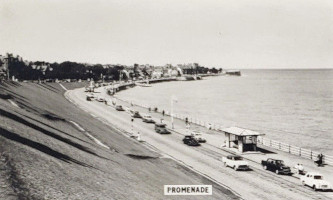Richard Harper takes over.
The 1965 'Star' set several new trends for the event. The Clerk of the Course, Richard Harper, decided that the event should start in the heart of some traditional rally country rather than from Wolverhampton and would therefore not require a long run-out to the first competitive sections. He fixed the start at Colwyn Bay which not only was able to offer plenty of space and accommodation for the expected 150 crews taking part but was also close to some fine competitive routing. The finish remained at Llandindrod Wells as it had for several years past.

PR work became even more formalised with the PR letters being printed in Welsh as well as English, an idea which went down extremely well with the locals.
Smaller selection of competitive vehicles
The other trend which was extremely clear from the results was that the top crews were choosing an ever smaller selection of competitive vehicles. Gone were the days when almost any ordinary or extraordinary production car could be seen in the listings. On this year’s Star the top 14 finishers were driving just the three types of car which were currently dominating British rallying: six Cooper 'S's, five Cortina GTs, and three Anglias.
There was one other 'first': although W&SSCC had now been organising the Express & Star for eight years, the event had never been won outright by a W&SSCC crew until now. The overall winner was the Cooper S of members David Friswell and Richard Binns.
The selectives were generally over moorland and hill lanes but whilst very tight and not usually ‘on’ they were not car-breakers for most competitors. Nevertheless, there were casualties. Veteran international driver Sidney Allard went off in a big way on the Elan Valley selective and lost half an hour and several top-rankers suffered mechanical damage. Roger Clarke/Jim Porter broke a drive shaft in their Rover 2000; Roy Fidler/Graham Robson blew a gasket in their Triumph 2000; Brian Harper/Ron Crellin found that the duplicated fuel feeds on their Cortina GT still couldn't get enough fuel to the carbs.
The weather was wet, muddy, and murky all night and the remnants of the recent snows were still in evidence alongside the lanes.
